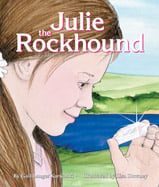Alignment to Standards for MD

| Grade | Number | Standard |
|---|---|---|
| 1 | SS-1.4.0.A.2.a | Give examples of natural and human resources used in production, such as making butter, making ice cream, and building houses |
| 2 | SC-2.2.0.A.1. | Describe and compare properties of a variety of Earth materials. |
| 2 | SC-2.2.0.A.1.a | Classify a collection of rocks based on the properties that distinguish one type from another. |
| 2 | SC-2.6.0.A.1. | Recognize and explain how Earths natural resources from the natural environment are used to meet human needs. |
| 2 | SC-2.6.0.A.1.a | Describe natural resources as something from the natural environment that is used to meet ones needs. |
| 2 | SC-2.6.0.A.1.b | Identify water, air, soil, minerals, animals, and plants as basic natural resources. |
| 2 | SC-2.6.0.A.1.c | Explain that food, fuels, and fibers are produced from basic natural resources. |
| 2 | SC-2.6.0.A.1.d | Identify ways that humans use Earths natural resources to meet their needs. |
| 3 | SC-3.4.0.A.1. | Identify ways to classify objects using supporting evidence from investigations of observable properties. |
| 3 | SC-3.4.0.A.1.a | Classify objects based on their observable properties. |
| 3 | SC-3.4.0.A.1.b | Provide reasons for placing the objects into groups. |
| 5 | SC-5.2.0.A.3. | Explain how rock is formed from combinations of different minerals and that smaller rocks come from the breakage and weathering of bedrock (solid rock underlying soil components) and larger rocks; soil is made partly from weathered rock, partly from plant |
| 5 | SC-5.2.0.A.3.a | Observe and classify a collection of minerals based on their physical properties: Color, Luster, Hardness, Streak |
| 5 | SC-5.2.0.A.3.b | Identify and compare the properties of rocks that are composed of a single mineral with those of other rocks made of several minerals using their physical properties. |
| K | SC-K.2.0.A.1. | Investigate objects and materials in the environment. |
| K | SC-K.2.0.A.1.a | Observe and describe a variety of natural and human-made objects found in familiar environments (school, neighborhood, etc.). |
| K | SC-K.2.0.A.1.b | Examine and describe Earth materials: rocks, soil, water |
| K | SC-K.2.0.A.1.c | objects and materials, such as trees, rocks, and hills on Earths surface can change. |
| K | SC-K.4.0.A.1. | Compare the observable properties of a variety of objects and the materials they are made of using evidence from investigations. |
| K | SC-K.4.0.A.1.b | Based on data, describe the observable properties, such as size, shape, color, and texture of a variety of objects. |
| K | SC-K.4.0.A.1.c | Identify and compare the properties of materials objects are made of and the properties of the objects. |
| K | SC-K.6.0.B.1. | Identify aspects of the environment that are made by humans and those that are not made by humans. |
| K | SC-K.6.0.B.1.a | Identify features of the natural environment, such as parks, zoos, buildings, etc. that are made by humans. |
| K | SC-K.6.0.B.1.b | Identify features of the natural environment that are not made by humans. |
| K | SS-K-4.0.A.2.c | natural resources, such as water, trees, and plants are used to make products |
| PK | SC-PK.4.0.A.1. | Use evidence from investigations to describe the observable properties of a variety of objects. |
| PK | SC-PK.4.0.A.1.b | Based on data gathered, describe the observable properties of familiar objects (size, shape, color, and texture). |
| PK-2 | SC-PK-2.1.0.C.1.f | Describe and compare things in terms of number, shape, texture, size, weight, color, and motion. |
| PK-4 | SS-PK&K.-4.0.A.2. | Identify that materials/resources are used to make products |